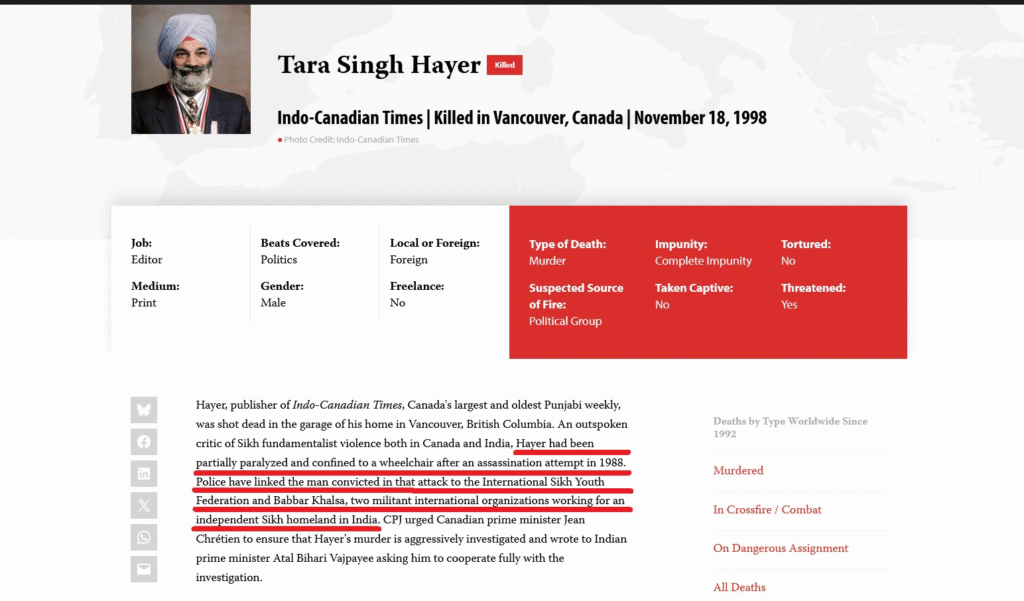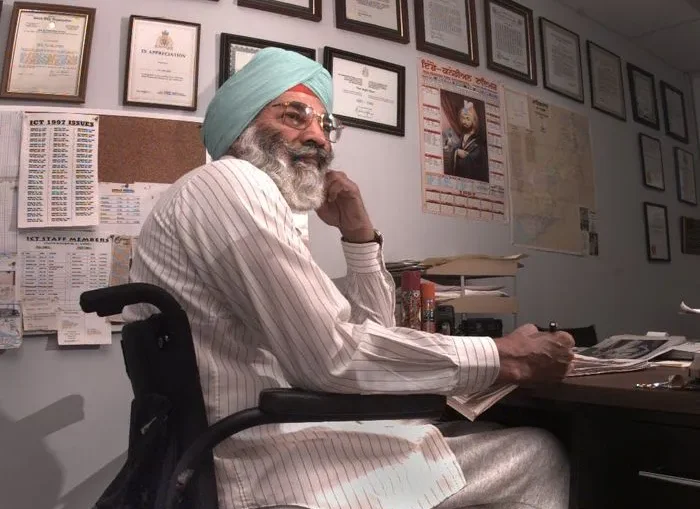AI Generated Summary
- He consistently condemned acts of violence carried out in the name of the Khalistan separatist movement and wrote extensively about individuals suspected of involvement in the Air India attack, which killed 331 people and remains the deadliest act of terrorism in Canadian history.
- He had agreed to serve as a key witness in the Air India prosecution and was expected to provide testimony that may have strengthened the case against individuals accused of planning the bombing.
- As the anniversary passes, calls persist for renewed attention to the unsolved killing and to the climate of intimidation that surrounded witnesses connected to the Air India investigation.
This week marks 27 years since the assassination of Tara Singh Hayer, the prominent Sikh-Canadian journalist whose outspoken criticism of violent extremism made him both an influential public figure and a target of intimidation.
Hayer, the publisher and editor of the Indo-Canadian Times, was gunned down outside his Surrey, British Columbia home on November 18, 1998. His killing — still unsolved — remains one of the most troubling chapters in Canada’s struggle to address the legacy of the 1985 Air India Flight 182 bombing.

A respected voice within Canada’s Sikh community, Hayer was among the few journalists willing to publicly challenge those he viewed as promoting extremist ideology. He consistently condemned acts of violence carried out in the name of the Khalistan separatist movement and wrote extensively about individuals suspected of involvement in the Air India attack, which killed 331 people and remains the deadliest act of terrorism in Canadian history.
Hayer’s reporting eventually drew the attention of investigators. He had agreed to serve as a key witness in the Air India prosecution and was expected to provide testimony that may have strengthened the case against individuals accused of planning the bombing. His cooperation with authorities came despite surviving a 1988 assassination attempt that left him partially paralyzed — a reminder of the persistent threats he faced.
Even so, he continued to speak publicly, writing columns that denounced extremist violence and warned about intimidation within parts of the diaspora. Friends and colleagues described him as unwavering, even in the face of escalating danger.

His death brought those dangers into stark relief. Investigators at the time indicated that Hayer’s killing appeared to be an effort to silence a critical witness. Many observers and community members have long believed that his assassination was linked to extremist elements seeking to prevent him from testifying, though no one has ever been charged.
The unresolved nature of the case continues to cast a shadow. For families of Air India bombing victims — and for many within Canada’s Sikh community who viewed Hayer as a courageous advocate for open dialogue — his murder symbolizes the cost of confronting violent extremism.
As the anniversary passes, calls persist for renewed attention to the unsolved killing and to the climate of intimidation that surrounded witnesses connected to the Air India investigation. For those who remember Hayer’s work, the unanswered questions remain as stark as ever.




